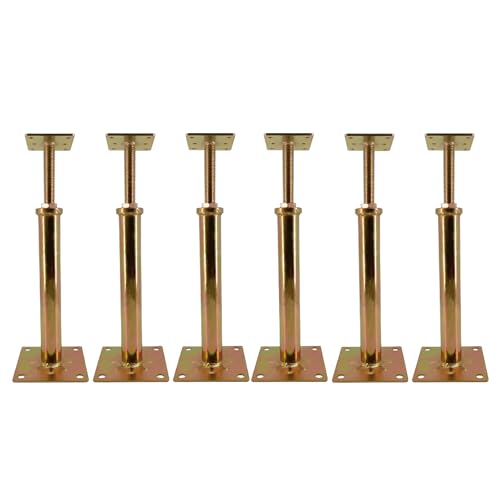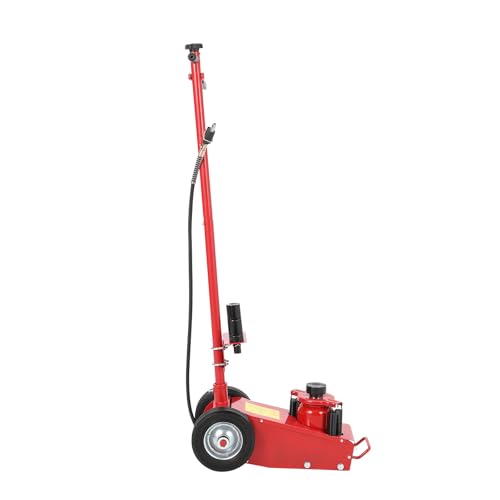
Why Does Timing Belt Replacement Cost Vary?

You’ll find timing belt replacement costs vary due to your vehicle’s make, model, and engine complexity, with luxury or interference engines demanding more labor.
Labor rates change by location and shop type, impacting prices further.
Replacing associated parts like the water pump alongside the belt raises costs but reduces future risks and labor expenses.
Delaying replacement increases chances of costly engine damage.
Understanding these factors helps you manage timing belt service effectively and avoid surprises.
Table
- Main Points
- Factors Affecting Timing Belt Replacement Costs
- The Role of Labor in Pricing Timing Belt Services
- Importance of Replacing Associated Components
- Water Pump Replacement and Its Impact on Cost
- Differences Between Dealer and Independent Shop Pricing
- Risks and Expenses of Delaying Timing Belt Replacement
- Frequently Asked Questions
- Final Thoughts
Main Points
- Vehicle make and model influence parts and labor costs, with luxury and complex engines costing more.
- Labor rates vary by location and job complexity, affecting overall replacement expenses.
- Replacing related components like water pumps increases total costs but prevents future failures.
- Timing belt replacement labor typically requires 3 to 5 hours, impacting pricing variation.
- Delaying replacement risks engine damage, increasing potential repair costs beyond initial service.
Factors Affecting Timing Belt Replacement Costs
Although timing belt replacement is a necessary maintenance task, the cost can vary widely depending on several factors. When you replace your timing belt, know that timing belt replacement costs hinge on your vehicle’s make and model—luxury and complex engines demand higher parts and labor expenses. A professional mechanic must navigate engine complexity and access challenges, directly affecting labor time and skill required. Labor rates fluctuate by location; urban areas typically impose higher charges, sometimes adding $100 or more. Additionally, replacing related components like the water pump or tensioners during the timing belt service elevates costs but prevents future failures. Understanding these variables empowers you to anticipate expenses accurately and work with your mechanic to plan a precise, cost-effective timing belt replacement.
The Role of Labor in Pricing Timing Belt Services

Labor plays a significant role in determining the cost of timing belt replacement, often accounting for a substantial portion of the total expense. You’ll find labor costs range from $400 to $1,000, influenced heavily by the job’s complexity and the time required—typically 3 to 5 hours. Since timing belt replacement demands removing multiple engine components and precise alignment to prevent damage, you’ll want a trusted mechanic with expertise. Regional labor rates, like $115 per hour in the Northeast, can further affect your timing belt replacement cost, especially in urban areas. Complex engine designs or luxury vehicles increase disassembly time, raising labor costs. Understanding this helps you appreciate why labor directly impacts pricing, emphasizing the value of skilled, efficient service in preserving your engine’s integrity.
Importance of Replacing Associated Components

When you replace your timing belt, it’s essential to also replace associated components like the water pump, tensioners, and idler pulleys because these parts undergo similar wear and are far easier to access during engine disassembly. Neglecting their replacement can lead to premature failure, negating your timing belt service investment. Many timing belt kits include a new water pump, which aligns with the logic that as the timing belt nears its replacement interval, the water pump’s risk of failure rises. Replacing these associated components simultaneously minimizes future labor costs, prevents leaks, and maintains peak engine performance. By proactively addressing seals and related parts during timing belt service, you secure engine longevity and reduce the likelihood of unplanned repairs, ensuring your vehicle operates efficiently and reliably.
 Consequences of a Broken Timing Belt Explained
Consequences of a Broken Timing Belt ExplainedWater Pump Replacement and Its Impact on Cost

When you replace the timing belt, swapping out the water pump simultaneously saves you on labor costs since the engine is already open. Ignoring the water pump now risks failure later, which can cause engine overheating and expensive repairs. Combining these services typically keeps your total cost between $800 and $1,400, optimizing both efficiency and long-term reliability.
Water Pump Replacement Benefits
Replacing the water pump alongside the timing belt can save you significant costs by minimizing labor expenses, as the engine is already partially disassembled during the timing belt service. Understanding water pump replacement benefits is essential when the timing belt is being replaced. Here’s why you should consider it:
- The risk of water pump failure rises after the timing belt reaches its replacement interval.
- Many timing belt kits include a new water pump, reducing the overall cost to replace.
- Replacing both parts simultaneously prevents costly future repairs caused by pump failure.
- It enhances engine reliability by ensuring efficient function of both components.
Cost Efficiency of Combining
Although timing belt replacement involves significant labor, combining it with water pump replacement optimizes cost efficiency by reducing overall labor charges. Since accessing the timing belt exposes the water pump, replacing both simultaneously saves you money by avoiding repeated labor costs. Many kits include a water pump, further lowering your total cost. Here’s a breakdown illustrating the cost impact:
| Task | Cost Impact |
|---|---|
| Timing belt replacement | High labor cost |
| Water pump replacement alone | Additional labor |
| Combined replacement | Shared labor cost |
| Kit including water pump | Lower parts cost |
| Prevented future water pump failure | Saves expensive repairs |
Preventing Future Repairs
Since the engine disassembly required for timing belt replacement provides direct access to the water pump, you can prevent costly future labor by replacing the water pump simultaneously. Timing belt change intervals greatly increase the risk of water pump failure, so tackling both together is efficient. Many timing belt kits even include a new water pump, enhancing value. By replacing the water pump when replacing the timing belt, you:
- Avoid separate disassembly labor costs later
- Lower the risk of sudden water pump failure
- Save $300 to $700 on future repairs
- Guarantee system reliability and engine longevity
Choosing this combined approach liberates you from unexpected breakdowns and additional expenses, making the timing belt change a strategic investment to prevent future repairs effectively.
Differences Between Dealer and Independent Shop Pricing

You’ll notice dealer pricing for timing belt replacement typically runs higher, primarily due to elevated labor rates and the use of OEM parts. Independent shops often charge less by utilizing aftermarket components and offering more flexible labor pricing, including flat rates. However, you should weigh these cost differences against variations in part quality, mechanic expertise, and warranty coverage to determine the best value.
Pricing Differences Explained
How do pricing differences between dealerships and independent shops impact your timing belt replacement cost? When you replace a timing belt, understanding these variations helps you choose wisely. Dealers typically charge $800 to $1,400, reflecting higher labor rates (~$115/hr) and OEM parts. Independent mechanics often offer lower rates, starting around $580 in rural areas, due to less overhead and varied parts sources.
Consider these factors:
- Labor costs: Dealers vs. independent shop hourly rates
- Parts: OEM parts at dealers vs. aftermarket options at independents
- Location: Urban vs. rural pricing differences
- Mechanic expertise: Shop familiarity with your vehicle make and model
Knowing how much does it cost to replace a timing belt at different shops empowers you to make informed decisions without compromising on quality.
 How to Tell If Your Timing Belt Needs Replacement
How to Tell If Your Timing Belt Needs ReplacementQuality and Warranty Considerations
Although independent shops often offer more affordable timing belt replacements, you should carefully weigh quality and warranty factors before deciding. Dealer prices reflect the use of OEM parts, ensuring superior quality of parts and reliability. Dealers also typically provide extended warranty considerations on parts and labor, which safeguard your investment in critical repairs. Independent shops, while budget-friendly, may utilize aftermarket parts with variable lifespans and offer limited warranties.
| Aspect | Dealer | Independent Shops |
|---|---|---|
| Quality of Parts | OEM, high reliability | Aftermarket, variable |
| Warranty Considerations | Extended, thorough | Limited, variable |
| Pricing Range | $800 - $1,400 | $580 - $1,200 |
Choose based on your priority between guaranteed quality and cost savings.
Risks and Expenses of Delaying Timing Belt Replacement
When you delay replacing your timing belt, especially on an interference engine, you greatly increase the risk of catastrophic engine failure caused by the belt snapping and pistons colliding with valves. Timing belts typically require replacement between 70,000 to 110,000 miles to avoid severe damage. Ignoring signs of wear like unusual noises or visible cracks can cost you dearly. Consider these risks and expenses:
- Belt replacements usually cost $500 to $1,400, a reasonable investment.
- Timing belt failure repairs range from $2,000 to $5,000.
- Broken belts on interference engines can cause piston-valve collisions.
- Delaying maintenance risks unexpected breakdowns and total engine failure.
Stay vigilant and act promptly to liberate yourself from costly repairs and maintain engine integrity.
Frequently Asked Questions
How Much Should I Pay for a Timing Belt Replacement?
You should expect timing belt prices to range $580-$1,400, including labor costs of 3-5 hours. Vehicle models affect this, and choosing aftermarket parts can lower expenses without compromising quality. Shop around wisely.
Why Is Replacing a Timing Belt so Expensive?
Replacing your timing belt is like untangling a spider’s web—labor costs soar because mechanics dismantle complex engine parts. Engine type and vehicle age demand precision, driving expenses as you liberate your ride from potential catastrophic failure.
At What Mileage Should a Timing Belt Be Replaced?
You should replace your timing belt within its lifespan, usually 70,000 to 110,000 miles, to maintain engine performance. Watch for signs of wear and follow maintenance recommendations to avoid costly damage and guarantee liberation from breakdowns.
Is Replacing a Timing Belt a Big Job?
Though it’s a demanding task, replacing your timing belt safeguards engine performance and aligns with your maintenance schedule. You’ll face labor costs due to intricate work, but this technical precision frees you from costly engine failures later.
Final Thoughts
When you face timing belt replacement, picture the intricate dance of gears and pulleys working in perfect sync. Skimping on timely service risks costly engine damage. Labor intensity, parts quality, and choosing between dealer or independent shops all shape your bill. Don’t overlook associated components like the water pump—they’re essential for smooth operation. Understanding these factors helps you make precise, informed decisions, ensuring your engine’s heartbeat stays strong and steady without unexpected expenses.
 What Is the Average Labor Time for Timing Belt Replacement?
What Is the Average Labor Time for Timing Belt Replacement?Reliable Floor Jacks on a Budget: Best Picks for Under $150
Top-Rated Floor Jacks Over $100: Built for Professionals, Priced for Smart Buyers
If you want to know other articles similar to Why Does Timing Belt Replacement Cost Vary? you can visit the Timing Belt Care and Replacement category.
Leave a Reply




























This is also interesting